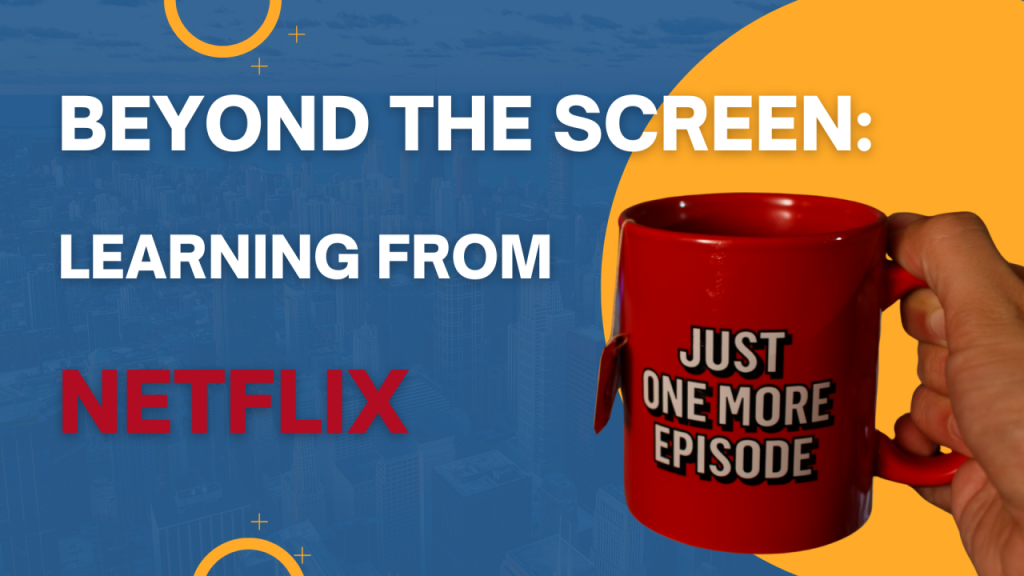
Netflix engaged its viewers better than any other media offer—be it traditional television broadcasters or other streaming services. But Netflix’s success isn’t just rooted in its offering interesting content. Netflix excels at captivating global audiences. As change managers, we can draw valuable lessons from Netflix’s narrative techniques, but we must also be cautious to avoid turning our change initiatives into mere spectacles where employees are passive viewers rather than active participants.
In my view, we can learn from Netflix in two ways. Netflix’s ability to engage users around the world is impacted by aspects of its 1) business model and its 2) storytelling abilities.
Learning from the Netflix Business Model:
✅ Personalization: Netflix’s algorithms offer personalized recommendations, ensuring users feel understood and valued. Similarly, effective change management should address individual concerns and motivations, making change feel relevant to everyone involved.
✅ Agility: Netflix rapidly adapts to changing consumer preferences and technological advancements. In business, being agile means staying ahead of industry curves and being ready to pivot strategies as circumstances dictate.
✅ Continuous Improvement: Netflix consistently tests and enhances its user interface and content offerings based on user data. Likewise, continuous feedback loops in change management can lead to better outcomes and more engaged employees.
Learning from Netflix Storytelling:
✅ Engaging Storytelling: Netflix hooks viewers with compelling stories that speak to their interests and emotions. In change management, crafting an engaging narrative around change can motivate and connect with employees, helping them see the transition’s personal and organizational benefits.
✅ Consistent Themes with Room for Character Development: Just as Netflix develops its characters through consistent themes over episodes, effective change management should continuously reinforce core messages while allowing room for individual and team growth. This approach ensures that the change narrative is both consistent and adaptable, reflecting the evolving nature of the organization and its people.
✅ Interactive Experience: Unlike passive Netflix viewing, change should be interactive. It requires active participation and feedback. It gets people to talk about the change to their peers. And it incorporates interactive elements like workshops, Q&A sessions, and real-time feedback tools to turn passive observers into active change agents.
However, here’s where caution is needed:
❌ Popcorn Syndrome: There’s a risk that if the change process feels too staged or theatrical, employees might disengage, treating the change like a Netflix show to be watched rather than participated in. This “Popcorn Syndrome” occurs when change feels distant or unconnected to the day-to-day realities of employees, leading them to passively observe rather than actively engage.
❌ Viewer Fatigue: While binge-watching can be enjoyable, it can also lead to fatigue. Similarly, bombarding employees with constant changes without respite can lead to change fatigue, disengagement, and resistance.
❌ Risk of Overextension: In its quest for growth, Netflix has sometimes spread itself too thin, venturing into markets with mixed success. For organizations, this is a cautionary tale about the dangers of implementing too many changes at once without adequate focus and resources. Don’t stretch your change narrative too thinly.
Takeaway: Learning from Netflix’s dual strengths in business model innovation and storytelling offers some insights for change managers looking to deepen engagement and facilitate meaningful organizational transformation. By integrating personalization, agility, and continuous improvement into our change management strategies, and crafting narratives that resonate deeply with employees, we can foster an environment of active participation rather than passive observation. However, it is crucial to balance engagement with realistic pacing and genuine connection to employees’ daily experiences to prevent disengagement and fatigue.
🔍 Your Thoughts? How do you make change management engaging without overwhelming your teams? What strategies have you found effective in making employees active participants in change?
#ChangeManagement #Storytelling #Netflix #Leadership #OrganizationalDevelopment #OCM
This is a copy of the same post on my LinkedIn blog. To comment and join the discussion on this topic switch to LinkedIn. Follow me for regular updates and blog articles: https://www.linkedin.com/in/drnilskoenig/
